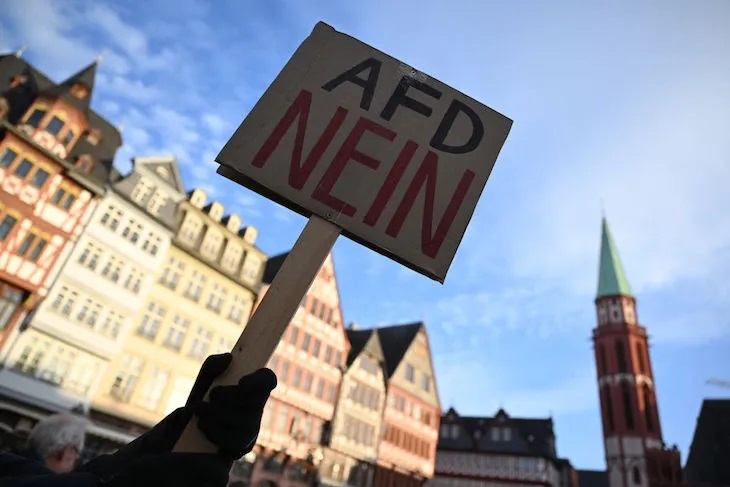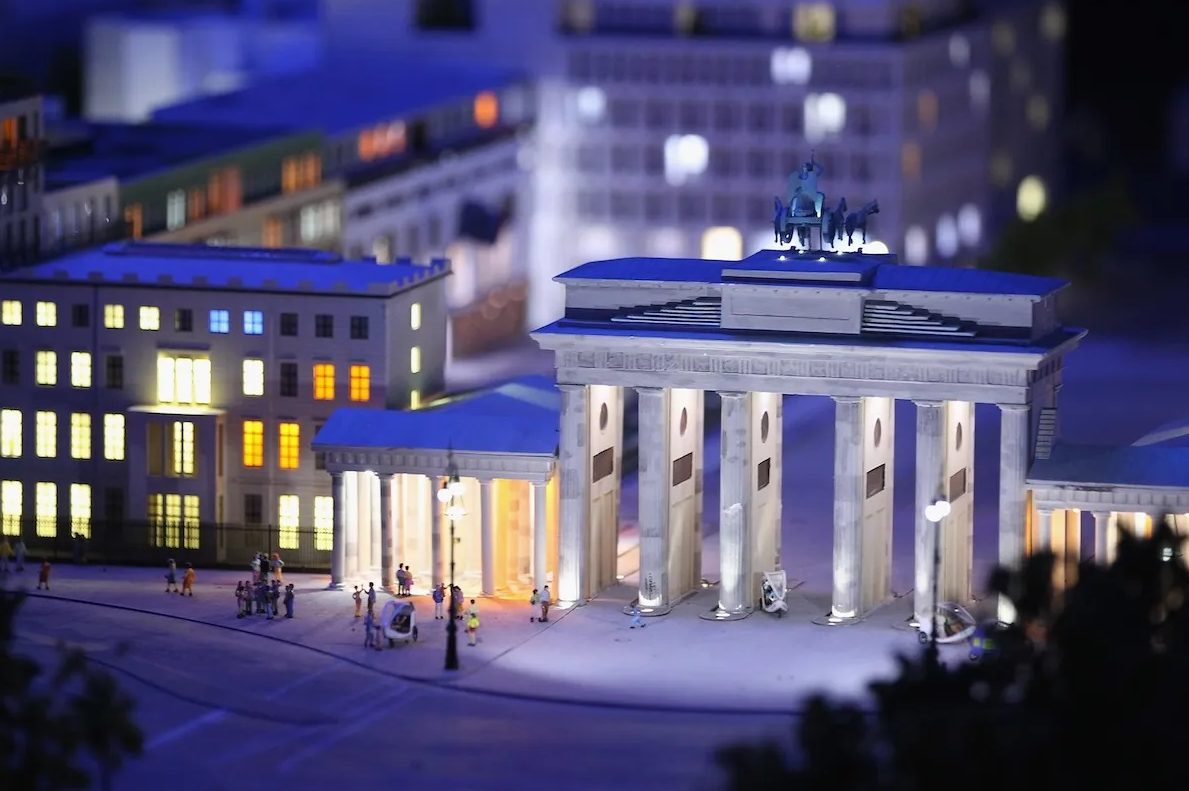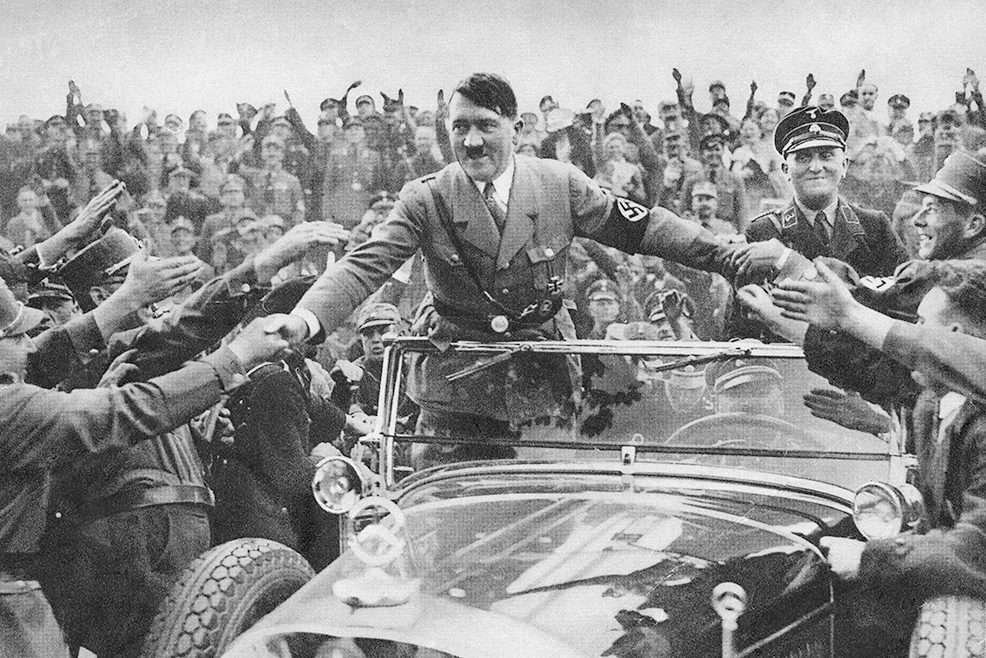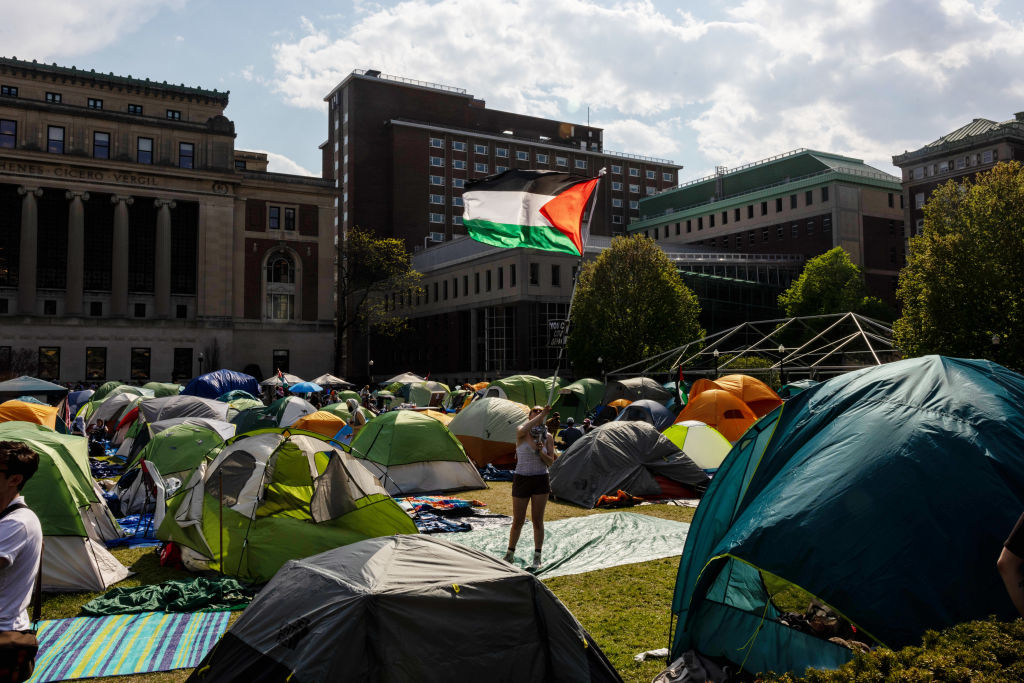The rise of Alternative für Deutschland has set off one of the largest waves of protest in modern German history. Half-a-million or so demonstrators took to the streets last weekend: they were a mixed bunch of all ages and ethnicities; politicians also marched alongside members of the public. All were united in their desire to stem the rise of the far-right AfD.
But while the marches looked impressive, there is little sign that they are working — or that they have the power to actually change anyone’s mind. Much has been made out of the fact that, while the AfD polled at around 23 percent for much of December and January, support for the party has now “dipped” a little to close to 21 percent. The marches are unlikely to be the reason: that decline is more likely to be due to the fact that a new populist party with an anti-immigration and “leftwing-conservative” offering was formed in January and included in the polls. The Bündnis Sahra Wagenknecht (BSW) currently has around 8 percent support, so combined with the AfD that makes 28 percent of people rooting for the political fringes.
Placards have compared AfD voters to Nazis
Despite the competition, the last few weeks have been good for the AfD. While the revelation in January that AfD members had met with neo-Nazi activists to discuss a “masterplan” for Germany led to mass protests, there was also an influx in AfD membership applications: the party claims that, since reports about that meeting emerged on January 10, it has received 1,900 new signups.
There is no doubt that the party is benefitting from the crisis facing Olaf Scholz’s administration. Even as Scholz took office in December 2021, only a quarter of the public deemed his government capable of solving the country’s problems. Nearly two-thirds couldn’t name a party that could. In that election, the Christian Democrats received their worst election result in history and Scholz’s SPD only beat them by close to two percentage points.
Instead of using their four years in office to build back trust, the ruling coalition has doubled down on the status quo and continued to rule above people’s heads. Scholz introduced a controversial heating bill in order to phase out oil and gas heating in private homes just as high energy prices were squeezing people’s living standards. The coalition also passed a law to make it easier for foreigners to acquire citizenship. This when nearly half of Germans said in a recent survey that immigration was one of their top concerns.
Over the last few months the centrist parties of the ruling coalition have looked on helplessly at their support dwindling while AfD polling climbed. Currently, a fifth of Germans say they intend to vote for the AfD, while the Social Democrats, Greens and Free Liberals would barely get a third of the vote combined. It is perhaps hardly surprising that Scholz and his foreign minister Annalena Baerbock have attended rallies in person, hoping that the turnout against the AfD can be converted into a vote for them.
But Germany’s centrists must be careful: simply attacking the AfD, rather than trying to find out why Germans are turning to the party, risks sending a message to its supporters that they are being ignored. Too many protesters on the anti-AfD marches seem more keen to condemn, rather than understand AfD voters: placards have compared AfD voters to Nazis; some signs carried messages saying things like “All of Hamburg hates the AfD.” Just as Hillary Clinton found to her cost in 2016 when she labeled Donald Trump supporters “deplorables,” it’s a dangerous game to look down on those who you don’t agree with politically.
Germany’s centrists must be careful
A supermarket chain found this out recently when it placed the slogan “For Democracy. Against Nazis.” in between ads for minced meat and salmon fillets. The backlash was so strong that it had to withdraw the campaign. This is not, as the supermarket boss claimed, because “more people identify with the word Nazi” but quite the opposite. Many AfD voters don’t consider themselves far-right, never mind “Nazis.” A recent survey showed that only 66 percent of Germans deem the AfD to be a “rightwing extremist” party: unsurprisingly only 6 percent of AfD supporters thought so themselves. Moderate parties must make a positive case for themselves.
The answer to Germany’s political tumult is empathy, not ostracization. You don’t strengthen democracy by telling people that they are wrong or “disgusting,” as many of the placards at the demonstrations have done. Mainstream politicians need to be on the ground, engaging with people in areas that feel “left behind” and make a real effort to win voters back, not push them further away.
This article was originally published on The Spectator’s UK website.


























Leave a Reply